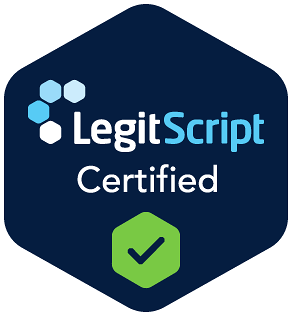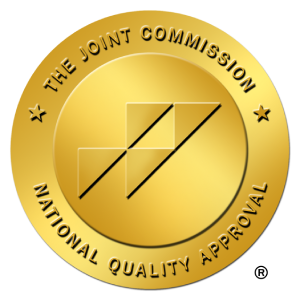America’s heroin and synthetic opioid crisis has hit staggering levels, with 106,000 annual overdose deaths 71,000 from fentanyl alone. You’ll find synthetic opioid fatalities have surged 3,341% since 2013, while only 6.3% of those with substance use disorders received treatment in 2021. Males face disproportionate risk, and rural areas now match urban overdose rates. The $53 billion treatment industry continues evolving as new patterns emerge across demographics and regions.
The Growing Scale of America’s Heroin Crisis

While heroin use has declined in recent years, America’s opioid crisis has evolved into an unprecedented synthetic drug epidemic, with over 106,000 drug overdose deaths recorded in 2021. You’ll find that fentanyl now dominates the environment, causing 71,000 deaths and accounting for roughly 75% of all opioid-related fatalities.
The crisis isn’t slowing down the pandemic triggered a 38% national surge in opioid deaths during 2020, highlighting urgent gaps in overdose prevention strategies. Non-opioid drugs like cocaine and psychostimulants have become increasingly involved in overdose deaths. Social determinants of health play a fundamental role, as economic instability and limited healthcare access in rural areas increase vulnerability. You’re seeing this impact across demographics, with young adults (18-34) facing particularly high risks. The crisis has hit New York especially hard, where opioid-related deaths skyrocketed 300% between 2010-2020.
Treatment Access and Utilization Rates

Despite over 21 million Americans needing substance use treatment, you’ll find that only 6.3% of individuals with substance use disorders actually received care in 2021. Recent federal grant initiatives have allocated billions to expand treatment accessibility nationwide.
You can see significant gaps in treatment program enrollment, with behavioral therapies capturing more than half of the treatment market share. Medication-assisted treatment costs between $500 and $5,000 annually for those seeking recovery support.
The U.S. addiction treatment industry’s projected growth to $53 billion by 2025 highlights both the expanding need for services and the persistent barriers to accessing specialized care, particularly in rural areas where hub-and-spoke models are emerging as a solution. The integration of digital therapeutics into addiction treatment represents a growing trend to improve accessibility and treatment outcomes for patients seeking help.
Treatment Program Enrollment Gaps
The staggering treatment gap in America’s substance use disorder crisis reveals that only 6.3% of individuals with addiction received care in 2021, despite over 46.3 million people needing treatment. You’ll find novel treatment delivery models and multisector coordination strategies struggling to meet overwhelming demand, as the industry projects to reach $53 billion by 2025.
The Western and Northeastern states consistently show higher treatment enrollment rates compared to other regions. Key enrollment gaps persist across treatment programs:
- Only 2.3 million people accessed medication-assisted treatment for opioids in 2023
- 4.5 million received alcohol use disorder treatment, highlighting significant unmet need
- Over 21 million Americans of all ages required substance use treatment in 2022
- Geographic disparities and workforce shortages limit treatment availability, especially in rural areas
These statistics underscore the urgent need for expanded treatment capacity and improved access nationwide.
Inpatient Vs Outpatient Numbers
Mounting evidence reveals stark disparities between inpatient and outpatient treatment access across the U.S., with geographic location playing an essential role in care availability. Treatment modality considerations heavily favor outpatient care in urban areas, while rural regions face substantial barriers to both options. The Western states uptick in overdoses creates additional strain on existing treatment facilities.
| Region | Inpatient Challenges | Outpatient Access |
|---|---|---|
| South | High demand, limited beds | Growing availability |
| West | Rising overdose rates | Variable coverage |
| Rural | Limited specialized care | Transportation barriers |
You’ll find relapse prevention strategies vary noticeably between settings, with inpatient programs showing higher short-term success rates for severe cases. However, insurance coverage predominantly supports outpatient care, creating access barriers for those needing intensive treatment. Southern states face particular pressure, with increased demand for inpatient services coinciding with limited facility availability and polysubstance use complications. Programs must account for patients transitioning from prescription opioid misuse, as this represents the pathway for approximately 80% of heroin users seeking treatment.
High-Risk Demographics and Mortality Patterns

Recent mortality data reveals a shifting scene in opioid-related deaths, where synthetic opioids have dramatically overshadowed traditional heroin use. You’ll find gender-based disparities increasingly evident, with males representing a disproportionate share of 2025 overdose fatalities. Rural overdose trends now mirror urban rates, highlighting the crisis’s geographic expansion.
Synthetic opioid deaths increased 3,341% since 2013, while heroin deaths dropped 9.9%. Life-stage-adjusted mortality rate stands at 26 per 100,000 population. Opioid deaths exceed motor vehicle accidents by 2.7 times. 21,922 EMS responses recorded in 2022, up 8.2% from 2021.
These statistics underscore a critical shift in high-risk demographics, with synthetic opioids affecting broader life-stage groups than historical heroin patterns. Economic disparities continue amplifying mortality risks, particularly in underserved communities where access to intervention remains limited.
Geographic Distribution of Heroin Use
Striking disparities between rural and urban heroin use patterns have emerged since 1999, with nonmetropolitan areas experiencing a staggering 325% increase in overdose deaths compared to 198% in metropolitan regions. You’ll find the urban-rural disparities most evident in opioid prescribing patterns, where rural counties report 87% more prescriptions than large metro areas. In fact, 14 of the 15 highest-prescribing counties were rural in 2017.
These geographic trends are particularly concerning in states like New York, which saw a 68% spike in opioid deaths during COVID. While urban centers face concentrated overdose clusters, rural communities continue to struggle with higher death rates (17.0 vs 16.2 per 100,000) and limited access to treatment services. The lack of opioid treatment programs in rural regions severely impacts patient outcomes. This gap highlights the urgent need for targeted interventions in underserved rural areas.
Current Prevention and Response Strategies
Today’s prevention and response strategies encompass five essential intervention categories: behavioral therapy, pharmacological treatments, technology innovations, community initiatives, and national policy directives.
Evidence-based interventions are revolutionizing heroin addiction treatment through integrated approaches. Community partnerships have established coordinated responses between healthcare providers and law enforcement, while expanding access to life-saving medications and support services. Recent studies show that £12 million funding has been allocated to support technological innovation projects in addiction treatment.
Research-driven solutions and community collaboration are transforming addiction treatment by uniting medical care, law enforcement and recovery support systems.
Key developments include:
- Virtual reality therapy and AI-driven platforms personalizing treatment plans
- Expanded distribution of naloxone and FDA-approved addiction medications
- School-based prevention programs focusing on early intervention
- Mobile clinics and telehealth platforms reaching underserved populations
You’ll find these strategies particularly effective when combined with behavioral therapy programs and pharmacological treatments like methadone and buprenorphine, which have shown significant success in supporting long-term recovery outcomes.
Economic Impact and Healthcare Costs
The staggering economic burden of heroin and synthetic opioid addiction costs the U.S. economy $2.7 trillion annually, representing nearly 10% of GDP. The crisis strains an already-stretched healthcare system, with over 100,000 overdose deaths yearly and only 6.3% of affected individuals receiving treatment amid healthcare workforce shortages. Direct medical care associated with addiction treatment and its health consequences further compounds these costs. With approximately 37.3 million Americans currently using illicit drugs, the healthcare system faces unprecedented challenges in addressing this epidemic.
The impact breaks down into three main categories: $1.34 trillion in lost quality of life and productivity, $1.1 trillion from fatal overdoses, and $277 billion in combined healthcare and crime-related expenses. Systemic policy challenges persist as synthetic opioids, particularly fentanyl, drive 93% of opioid deaths. The rise in overdose deaths has been exacerbated by users engaging in polydrug use with methamphetamine, creating deadly combinations that complicate treatment efforts.
The ripple effects touch every sector of the economy, from reduced workforce participation to increased emergency room demands, creating a complex web of financial consequences that dwarf other national economic challenges.
Frequently Asked Questions
How Long Does Heroin Stay Detectable in Different Types of Drug Tests?
The time frame for heroin detection varies across biological samples. You’ll test positive in blood for up to 6 hours, while urine tests can detect heroin for 2-7 days, depending on your usage frequency.
Hair testing offers the longest detection window, showing use patterns over several months. Your metabolism, body fat, hydration levels, and comprehensive health will affect these timeframes. Most workplaces rely on urine testing with confirmation through advanced methods.
What Percentage of Heroin Users Successfully Maintain Long-Term Recovery After Treatment?
You’ll find that long-term recovery rates vary greatly, with only 20-40% of heroin users maintaining sustained abstinence after evidence-based treatment. Your chances of success increase when you combine multiple harm reduction strategies with professional support.
While 40-60% relapse within the initial year, you’re most vulnerable during early recovery. After 15+ years of sobriety, you’ll still face a 25% relapse risk, highlighting the importance of ongoing support and vigilance.
How Does Fentanyl-Laced Heroin Differ in Appearance From Pure Heroin?
You’ll find that pure heroin typically appears as black tar, brown chunks, or white powder, while fentanyl-laced heroin inclines/gravitates/leans toward lighter off-white or gray shades. However, powder color differentiation isn’t a reliable indicator, as fentanyl is colorless and odorless. This creates significant potency assessment challenges, as you can’t visually detect fentanyl contamination.
While pure heroin forms dark brown solutions when dissolved, fentanyl-laced samples may appear clearer or lighter, making visual identification dangerously unreliable.
What Legal Protections Exist for Individuals Seeking Emergency Help During Overdoses?
You’re shielded under Good Samaritan regulations in all 50 states when seeking urgent assistance for overdoses. These laws protect you from prosecution for straightforward drug possession when calling 911.
In Illinois, you’re particularly covered for possessing up to 3 grams of heroin or 40 grams of prescribed opioids. While overdose deterrence programs provide legal access to naloxone, bear in mind that safeguards don’t extend to drug trafficking or distribution charges.
How Effective Are Home Detox Methods Compared to Medical Detoxification Programs?
Home detox methods are considerably less effective and riskier than supervised medical detoxification programs. You’ll face a 60-75% higher risk of relapse without proper medication management and monitoring.
Medical facilities provide essential interventions like methadone or buprenorphine, reducing withdrawal severity by 40-60%. Without clinical supervision, you’re exposed to dangerous complications including severe dehydration, seizures, and life-threatening electrolyte imbalances.
Professional detox programs offer 24/7 medical support and structured recovery protocols.






